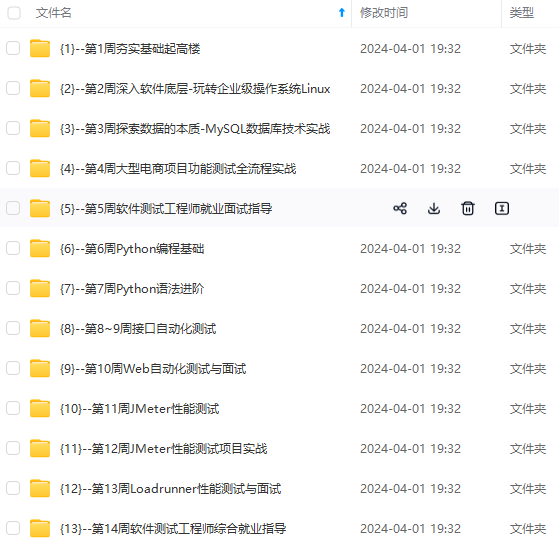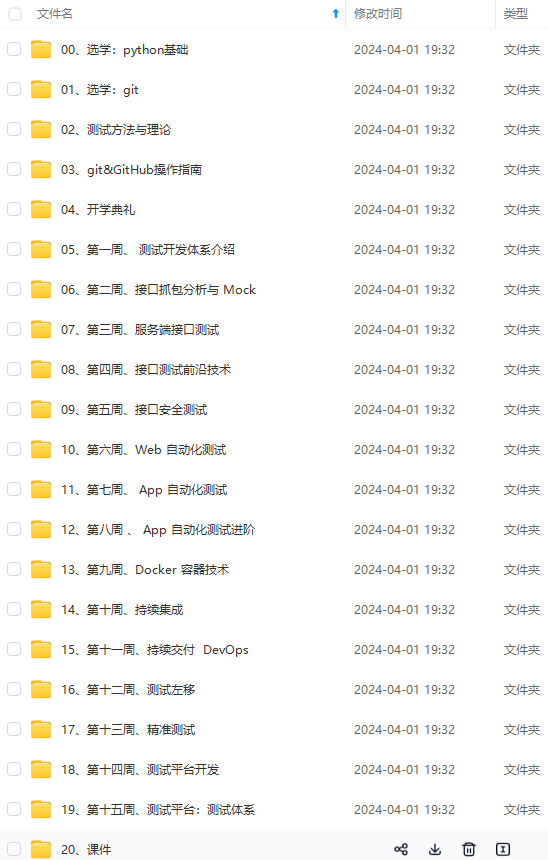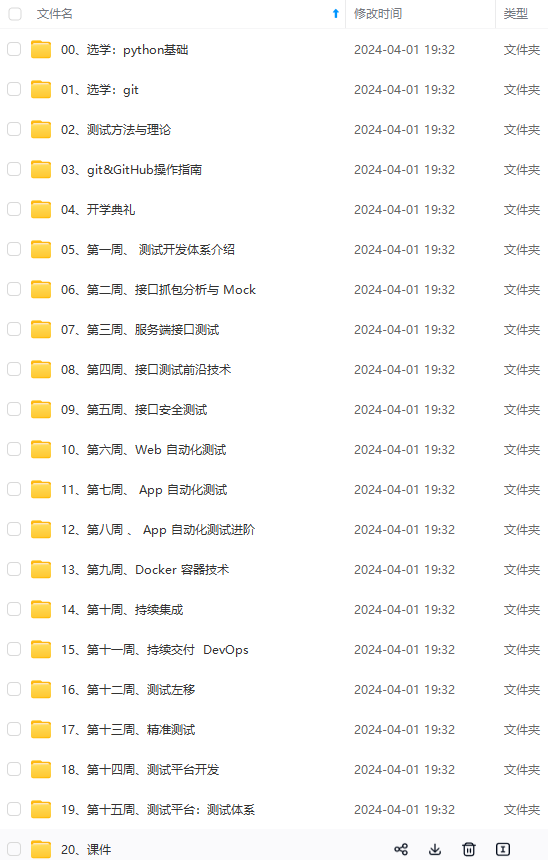

网上学习资料一大堆,但如果学到的知识不成体系,遇到问题时只是浅尝辄止,不再深入研究,那么很难做到真正的技术提升。
一个人可以走的很快,但一群人才能走的更远!不论你是正从事IT行业的老鸟或是对IT行业感兴趣的新人,都欢迎加入我们的的圈子(技术交流、学习资源、职场吐槽、大厂内推、面试辅导),让我们一起学习成长!
1.–add-module
该选项是nginx的一个编译参数,用来添加额外的第三方模块。因此可知,对任何第三方模块都是使用该方法来添加进nginx中
2.以上的安装可见没有make install这一步,这是因为我已经安装了nginx,我只需要更新我的可执行程序,而其他的文件我不需要更新,这也是nginx升级的原理。如果没有安装过nginx,则需
要make install这一步
附:ngx_echo 模块的下载地址
https://github.com/openresty/echo-nginx-module/releases
测试echo指令是否可用:
#vim /usr/local/nginx/conf/nginx.conf
修改配置文件,添加一个server段做测试,配置如下:
server {
listen 80;
server_name c.lxm.com;
access_log /data/logs/access.log main;
location / {
root /data;
index index.html index.htm;
}
location /test {
set $foo “hello world”;
echo “foo: $foo”;
}
由上面的信息可知,这里我使用了一个/test接口来测试echo指令是否可用。
注:有的人可能会问,什么叫接口啊?说白了接口就是一个访问路径,访问入口而已,通过这个入口可以进行交互的作用。。其次这里的set是设置变量的指令,更多信息请看官方文档,这个不是该文档要讨论的。。。
[root@test1 conf]#echo “10.0.10.11 c.lxm.com” >> /etc/hosts
[root@test1 conf]# service nginx configtest
nginx: the configuration file /usr/local/nginx/conf/nginx.conf syntax is ok
nginx: configuration file /usr/local/nginx/conf/nginx.conf test is successful
[root@test1 conf]# service nginx restart
nginx: the configuration file /usr/local/nginx/conf/nginx.conf syntax is ok
nginx: configuration file /usr/local/nginx/conf/nginx.conf test is successful
Stopping nginx: [ OK ]
Starting nginx: [ OK ]
[root@test1 conf]# curl http://c.lxm.com/test
foo: hello world //成功的输出了信息
[root@test1 conf]#
到此,可以确定第三方模块添加成功,echo指令也可以使用了。。。。
测试变量的含义:
第一组:
修改配置文件nginx.conf,将test接口改为如下配置:
location /test {
echo “args: $args”;
echo “name: $arg_name”;
echo “sex : $arg_sex”;
echo “is_args: $is_args”;
}
访问测试:
[root@test1 conf]# curl ‘http://c.lxm.com:80/test?name=lxm&sex=man’ //注意:这里的测试url要加上引号,表示加上参数一起是一个完成的url
args: name=lxm&sex=man
name: lxm
sex : man
is_args: ?
[root@test1 conf]#
由上面的测试信息,来解释下面几个变量:
$args :该变量用来获取url后面的所有参数 ,?表示参数的起始处
a
r
g
_
P
A
R
A
M
E
T
E
R
:这是参数的一个匹配模式
,
P
A
R
A
M
E
T
E
R
为具体的参数名
,
arg\_PARAMETER :这是参数的一个匹配模式,PARAMETER为具体的参数名,
arg_PARAMETER:这是参数的一个匹配模式,PARAMETER为具体的参数名,arg_PARAMETER就表示获取具体的参数值,例如上面的$arg_name就是获取url中name的值
$is_args :判断url是否带参数,如果带,则返回一个?,否则返回一个空字符串
第二组:
$http_HEADER //使用该方式来获取http请求头部中的值,HEADER是一个匹配模式,匹配请求头部中key:value中的可以,返回的是value
$sent_http_HEADER //使用该方式来获取http响应头部中的值,HEADER是一个匹配模式,匹配响应头部中key:value中的可以,返回的是value
由于这个涉及到http请求流的问题,这里采用日志的形式展示效果,如果用echo来返回,有点东西测试不出来。。
新建一日志格式:
log_format test ‘$http_user_agent $sent_http_content_type $sent_http_content_length’;
修改test接口的server部分:
server {
listen 80;
server_name c.lxm.com;
access_log /data/logs/access.log test;
location / {
root html;
index index.html index.htm;
}
location /test {
root html;
index index.html index.htm;
}
}
#service nginx configtest
#service nginx restart
[root@test1 conf]# curl http://c.lxm.com/test/index.html
welcome to my variables test
[root@test1 conf]#curl -I注意:在变量中的字符串一律是小写,虽然在请求头和响应头中的字符串可能有大写,但是nginx会一律将其转换为小写之后进行匹配。。。
此外,要想知道http请求头和响应头中都有些什么内容,建议使用火狐浏览器的F12调试功能中的网络功能,来获取请求头和响应头的信息。。。。
还要扒拉一句的是:虽然这两个变量可以获取头部中的信息值,但是经过我的测试,并不是对所有的都有效,起码在响应头中的date和server,本人没测试成功,总是返回空值。或许你该注意。。
第三组:
配置文件如下:
server {
listen 80;
server_name c.lxm.com;
access_log /data/logs/access.log test;
location / {
root html;
index index.html index.htm;
}
location /test {
proxy_pass http://backend;
proxy_redirect off;
echo “uri: $uri”;
echo “request_uri: $request_uri”;
echo “request_method: $request_method”;
echo “request_filename: $request_filename”;
echo “content_length: $content_length”;
echo “content_type: $content_type”;
echo “document_root: $document_root”;
echo “document_uri: $document_uri”;
echo “server_addr: $server_addr”;
echo “server_name: $server_name”;
echo “server_port: $server_port”;
echo “server_protocol: $server_protocol”;
echo “host: $host”;
echo “hostname: $hostname”;
echo “remote_addr: $remote_addr”;
echo “remote_user: $remote_user”;
echo “remote_port: $remote_port”;
}
}
#service nginx configtest
#service nginx restart
[root@test1 conf]# curl ‘http://c.lxm.com:80/test/index.html?name=lxm&sex=man’
uri: /test/index.html
request_uri: /test/index.html?name=lxm&sex=man
request_method: GET
request_filename: /usr/local/nginx//html/test/index.html
content_length:
content_type:
document_root: /usr/local/nginx//html
document_uri: /test/index.html
server_addr: 10.0.10.11
server_name: c.lxm.com
server_port: 80
server_protocol: HTTP/1.1
host: c.lxm.com
hostname: test1.lxm.com
remote_addr: 10.0.10.11
remote_user:
remote_port: 57292
根据上面的输出信息,来解释一下下面的变量:
$request_filename //该变量获取的是请求的文件在linux服务器上的完整的绝对路径
$request_method //该表示获取的是http请求的方法
$request_uri //该变量表示的原始请求的uri,包括参数。所谓原始请求就是即使在内部做了重定向之后也不会变化
$uri //获取的是当前请求的uri,不包括参数
$content_length //获取的是http请求头中Content-Length的值,不过这里似乎没显示,抱歉这里的测试页面中没有该字段
$content_type //获取的是http请求头中的Content-Type字段,不过这里也没显示。。。
$document_root //获取的是请求url的文件所在的目录路径
$document_uri //当前请求的uri,从上面的信息来看,和uri的效果是一样的
$remote_addr //获取的是客户端的ip地址,这里为什么是10.0.10.11呢,因为我是在本机上用curl测试的,即使客户端也是服务器
$remote_port //获取客户端的访问端口,这个端口是随机的
$remote_user //获取客户端的认证用户信息,这里因为没有用认证,所谓显示为空
$server_protocol //表示服务器端想客户端发送响应的协议
$server_addr //服务器的地址
$server_name //客户端访问服务端的域名,即url中的域名
$server_port //服务器端做出响应的端口号
$binary_remote_addr //显示二进制的客户端地址
$host //和server_name一样,表示的是域名
$hostname //表示服务器端的主机名
第四组:
对于这一组使用日志的形式来展示。。
修改配置文件nginx.conf:
log_format testproxy ‘$proxy_add_x_forwarded_for $proxy_host $proxy_port $proxy_protocol_addr $upstream_addr $upstream_cache_status $upstream_response_length $upstream_response_time $upstream_status’;
server {
listen 80;
server_name a.lxm.com b.lxm.com c.liwei.com;
#charset koi8-r;
access_log logs/host.access.log testproxy;
#location / {
# root html;
# index index.html index.htm;
# auth_basic “relam authentication”;
# auth_basic_user_file /usr/local/nginx/htpasswd;
#}
location / {
root html;
proxy_redirect off;
proxy_pass http://backend;
proxy_set_header Host $host;
proxy_set_header X-Real-IP $remote_addr;
proxy_set_header X-Forwarded_For $proxy_add_x_forwarded_for;
proxy_next_upstream http_500 http_502 http_503 error timeout invalid_header;
proxy_cache cache_one;
proxy_cache_valid 200 302 1h;
proxy_cache_valid 301 1d;
proxy_cache_valid any 1m;
expires 30d;
}
}
注意:上面的内容是nginx配置文件的一个片段,只是跟我们的测试内容相关而已
#service nginx configtest
#service nginx restart


网上学习资料一大堆,但如果学到的知识不成体系,遇到问题时只是浅尝辄止,不再深入研究,那么很难做到真正的技术提升。
一个人可以走的很快,但一群人才能走的更远!不论你是正从事IT行业的老鸟或是对IT行业感兴趣的新人,都欢迎加入我们的的圈子(技术交流、学习资源、职场吐槽、大厂内推、面试辅导),让我们一起学习成长!
外链图片转存中…(img-2YtoDdDk-1715385407683)]
网上学习资料一大堆,但如果学到的知识不成体系,遇到问题时只是浅尝辄止,不再深入研究,那么很难做到真正的技术提升。
一个人可以走的很快,但一群人才能走的更远!不论你是正从事IT行业的老鸟或是对IT行业感兴趣的新人,都欢迎加入我们的的圈子(技术交流、学习资源、职场吐槽、大厂内推、面试辅导),让我们一起学习成长!






















 458
458

 被折叠的 条评论
为什么被折叠?
被折叠的 条评论
为什么被折叠?








